Are you measuring your flour incorrectly? This post will walk you through how to measure flour correctly and show you the proper way to do it using measuring cups as well as how to properly measure it by weight using a kitchen scale (the best way to do it!).
These two methods can be used for whatever type of flour you’re using, regular all-purpose flour, whole wheat flour, cake flour, any type of gluten-free flour, and starches.
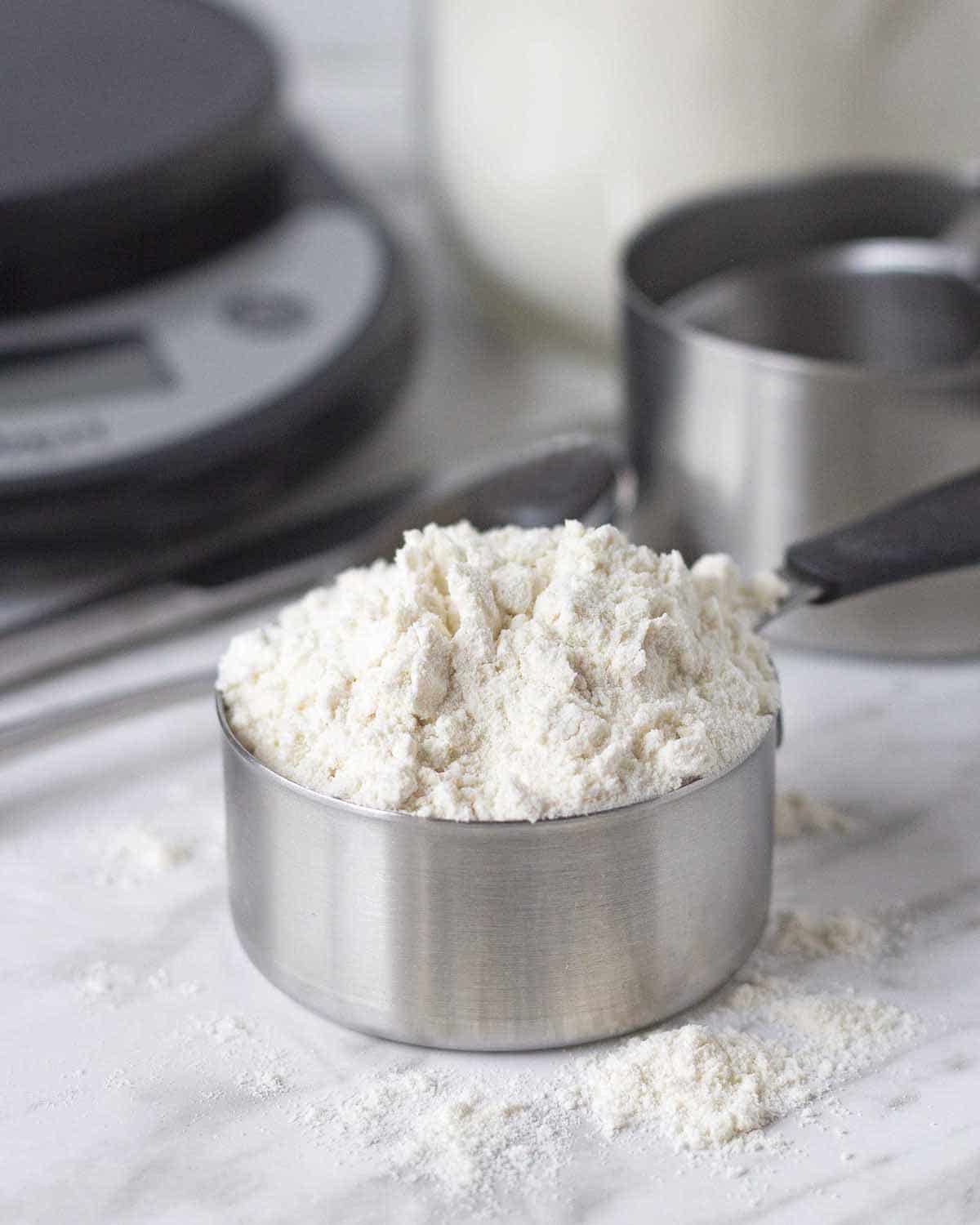
Save This Recipe!
In a rush? Don't have time to scroll through this page right now? Enter your email below and this recipe/article will be sent straight to your inbox so you can come back to it when you're ready. Plus, you'll receive delicious recipes every week! You may unsubscribe at any time.
I know it may seem strange to have an ENTIRE post talking about how to measure flour correctly but it's something that's extremely important to get right if you want your recipes to turn out perfectly.
Incorrect flour measurement is actually a common mistake that's made in baking and it's a mistake you may not even realize you're making!
When it comes to gluten-free baking, especially, having the correct amounts is extremely important to get the best results. Your flour and starches need to have an accurate measurement for success.
NOTE: When I started this website, scales were not even on my radar, but now that I regularly use and love mine, you'll notice that my recent recipes include both volume and weight measurements. I've been working to update older recipes that include just cup measurements, but it will take a while to get them all done!
Are You Doing It the Wrong Way?
When you measure flour for your baking, does it look something like this?
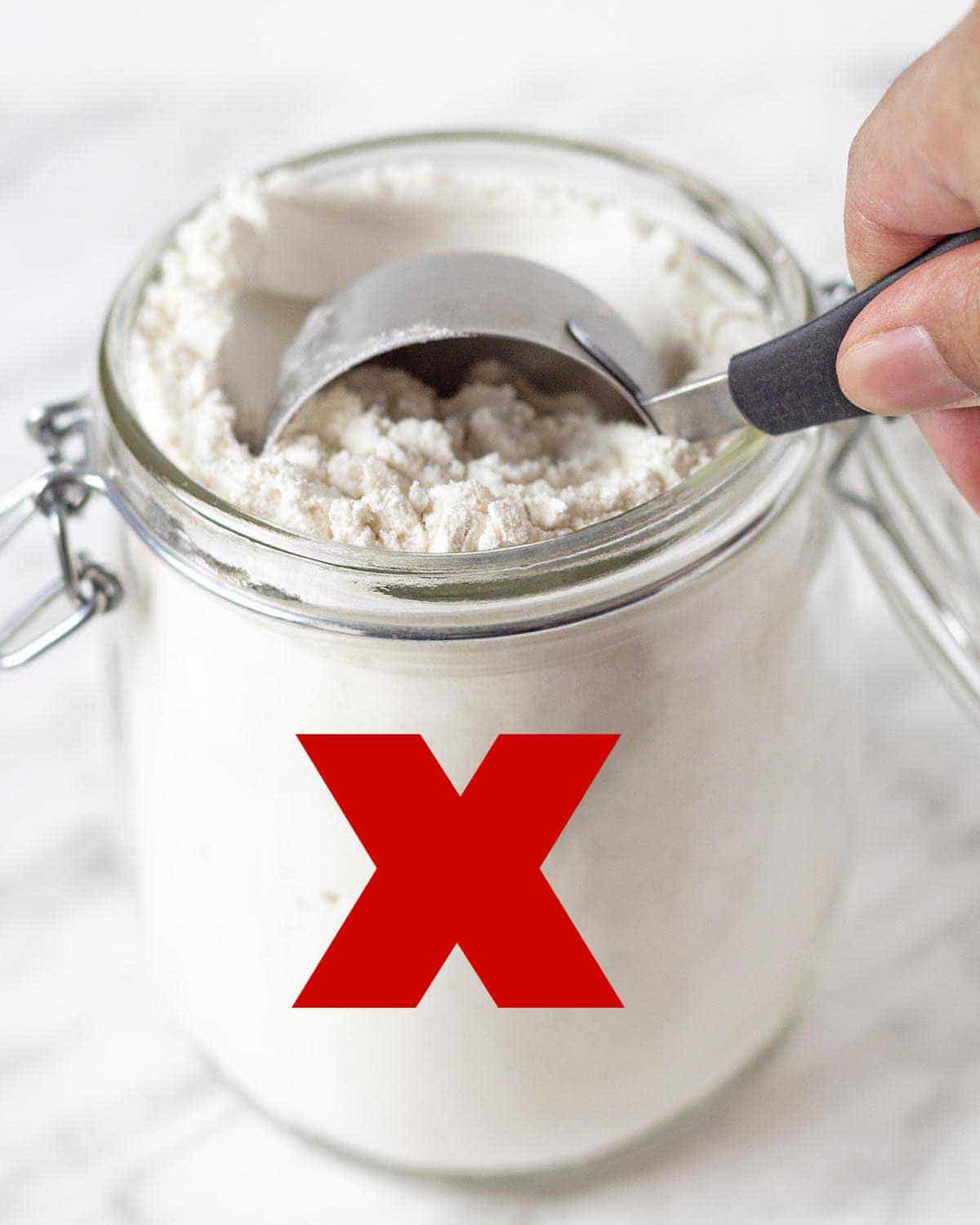
If you measure your flour like in the image above, by dunking a measuring cup directly into the flour container or bag of flour, that's the wrong way to do it.
However, if you do it that way, you're not alone, many people do it like this, I used to do it like that, too! Once I learned how to bake properly, this was one of the first things I corrected.
Measuring your flour like this packs it down into your cup, causing up to 1.5x extra (or more!) flour to be added to your recipe.
Too much flour will make the batter or dough for your cookie recipes, bars, muffins, pie crusts, cakes, loaves, and all baking projects too thick and the final product will be dry, crumbly, dense and/or tough.
On the other end, too little flour will result in flat, crumbly recipes, or treats that have too much moisture. the balance between the wet and dry ingredients will be off.
This is why it's such an important thing to get your flour measurements (and all measurements!) correct when baking.
If you currently measure your flour like in the picture above, let's go through how to do it right.
I'll show you the two easy ways to measure it so once you've finished reading this post, you'll know how to properly measure flour for baking using measuring cups AND a kitchen scale so you get consistent results every time you bake.
The Measuring Cup Method
Measuring with cups is how most people here in North America measure their dry ingredients, and it's perfectly fine to do it this way, as long as you use the spoon and level method (also known as the spoon and sweep method), which I'm going to show you.
Tools You'll Need
All you need to measure flour the right way without scales is a good set of dry measuring cups (¼, ⅓, ¾, 1 cup) from a reliable brand (this is a good set), a spoon and a butter knife with a flat edge.
IMPORTANT: Dry measuring cups, like in the image below, must be used to measure dry ingredients, do not use a cup designed to measure liquids.
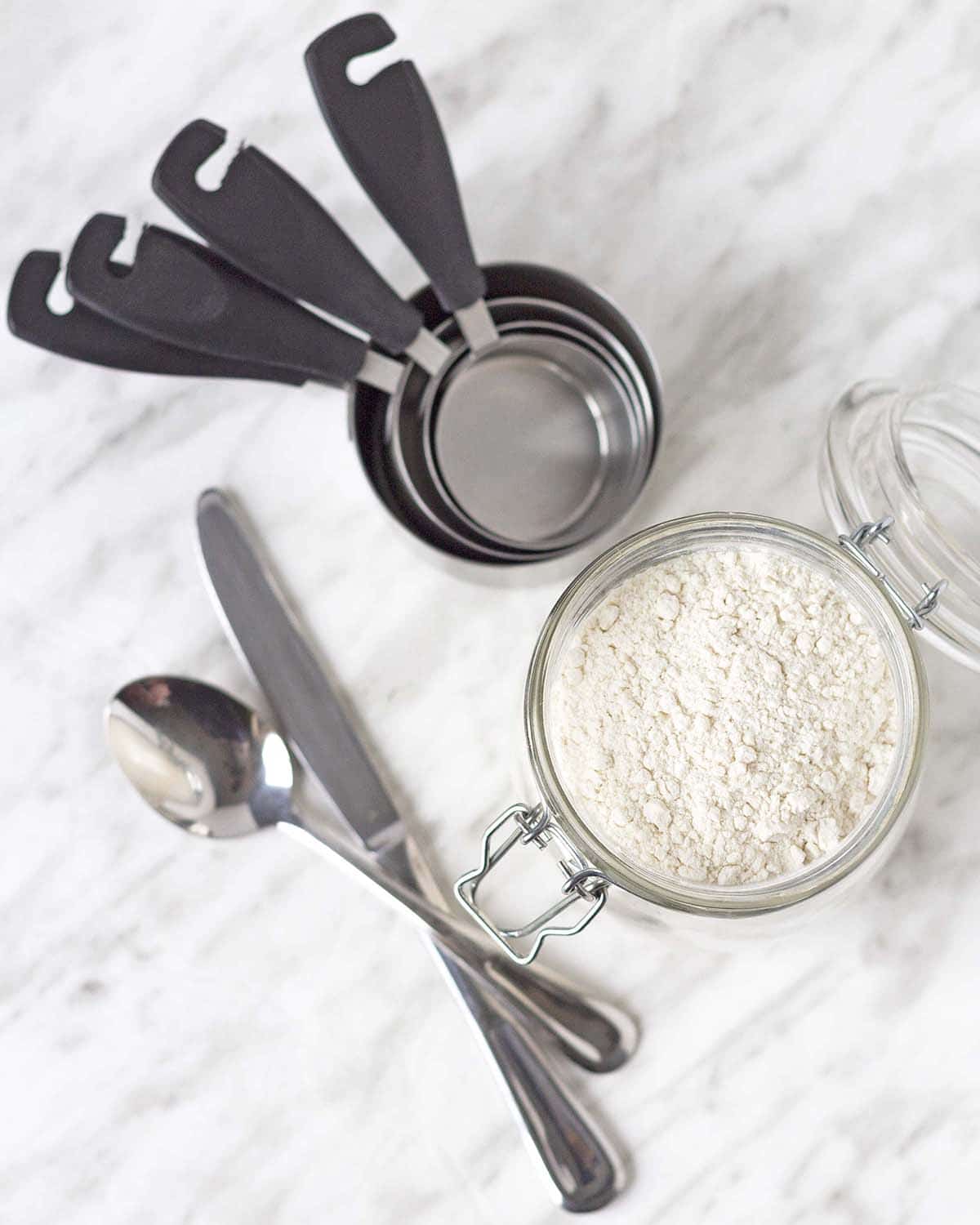
Flour settles as it sits, whether it's in a jar or a bag, so the first thing you'll need to do is "fluff" up your flour with your spoon (or a fork) to aerate it slightly and unpack it.

Next, you'll do the following steps, follow along with the images below:
1. Using a spoon, gently spoon the flour into your measuring cup and be sure not to pack it down. (Don't use a scoop to do this, it can pack the flour down).
2. Overfill the cup as shown in image #2 below. Don't tap the sides of the cup, this will cause the flour to pack down as well. Make sure the flour comes past the top of the measuring cup.
3. Using the back of a knife (the flat edge of your butter knife), scrape it across the top to get rid of the excess flour.
4. The flour is now levelled off with a flat surface and is ready to be used.
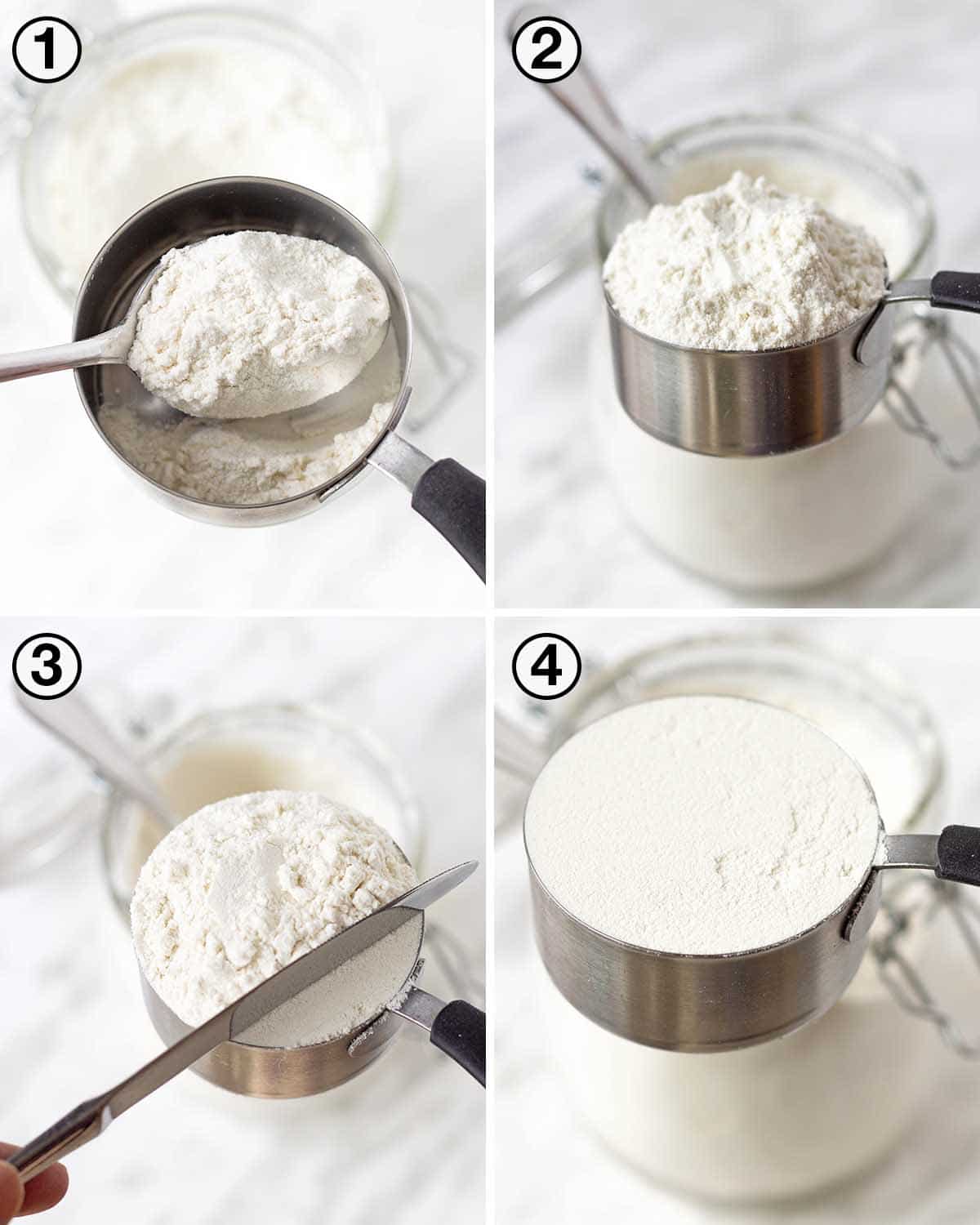
The Kitchen Scale Method
Measuring your flour without cups is the best and most accurate way to do it. So how do you measure a cup of flour without a measuring cup? With a digital kitchen scale!
Weighing your flour is the best way to be sure you're using the correct amount of flour (and other ingredients) for your recipes. This is the way it's done in most countries outside of Canada and the US.
I was resistant to go the way of the scale until a little while back, but now that I've learned how to measure flour in grams, I always use a scale, in conjunction with cups, when developing and making my recipes and I now I understand why it's the default way to do it in so many countries.
It's easier, less messy, and SO accurate. When you use measuring cups, even the correct way, there is still room for error. When you use a scale, it's always right (unless the scale is faulty or the batteries need to be changed.) It's my preferred method.
Tools You'll Need
Digital kitchen scales are inexpensive, yes, there are those that are on the pricey side, but there's no need to purchase a pricey one unless you're a professional baker and you need a bunch of extra features.
To learn how to weigh flour, all you need is a simple digital scale that will show you different units of measure (grams being the most important) and has a tare button. That's it.
I own two kitchen scales, but you don't need two, I have more than one because I like to have a backup because of all the recipe development I do. I love the two that I own and highly recommend them if you're looking for one.
- Ozeri Scale (Amazon Link) - This is the food scale you see in the images below and it comes in seven different colours so you can choose the one you like best.
- AccuWeight Glass Scale - This scale has a glass surface that wipes up easily in case there are any spills while measuring.
In addition to the scale, you'll need a bowl and a spoon.
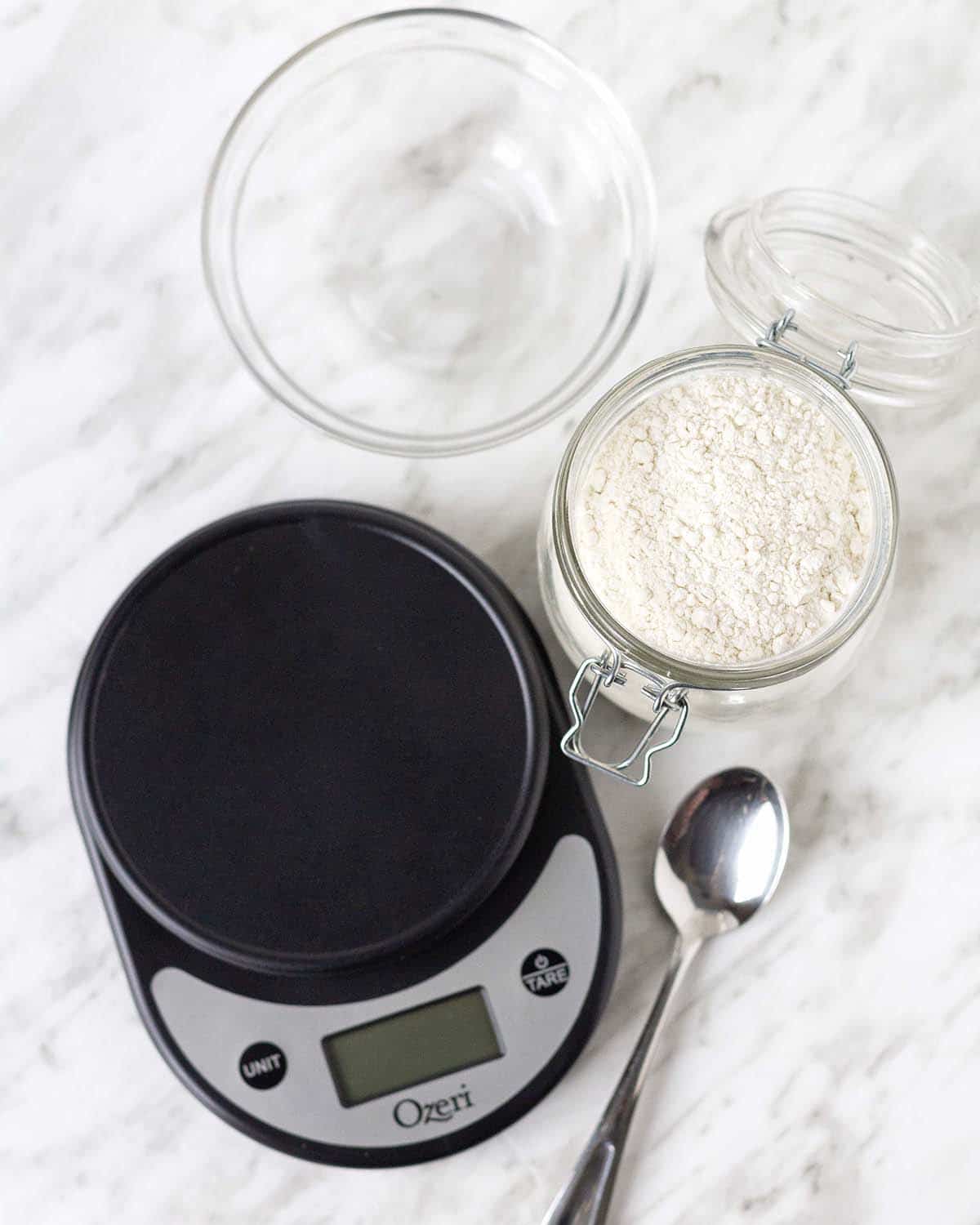
Next, you'll do the following steps, follow along with the images below:
1. With the scale off, place the bowl you'll be adding the flour to on top.
2. Turn the scale on and make sure the display reads zero. If for some reason it doesn't, press the tare button. This will tell the scale to ignore the weight of the bowl. At this point, make sure that the scale is set to measure in grams.
3. Using the spoon, add the flour to the bowl until you get to the weight you need.
4. If you added too much flour, remove small amounts of flour until you get it to where it needs to be.
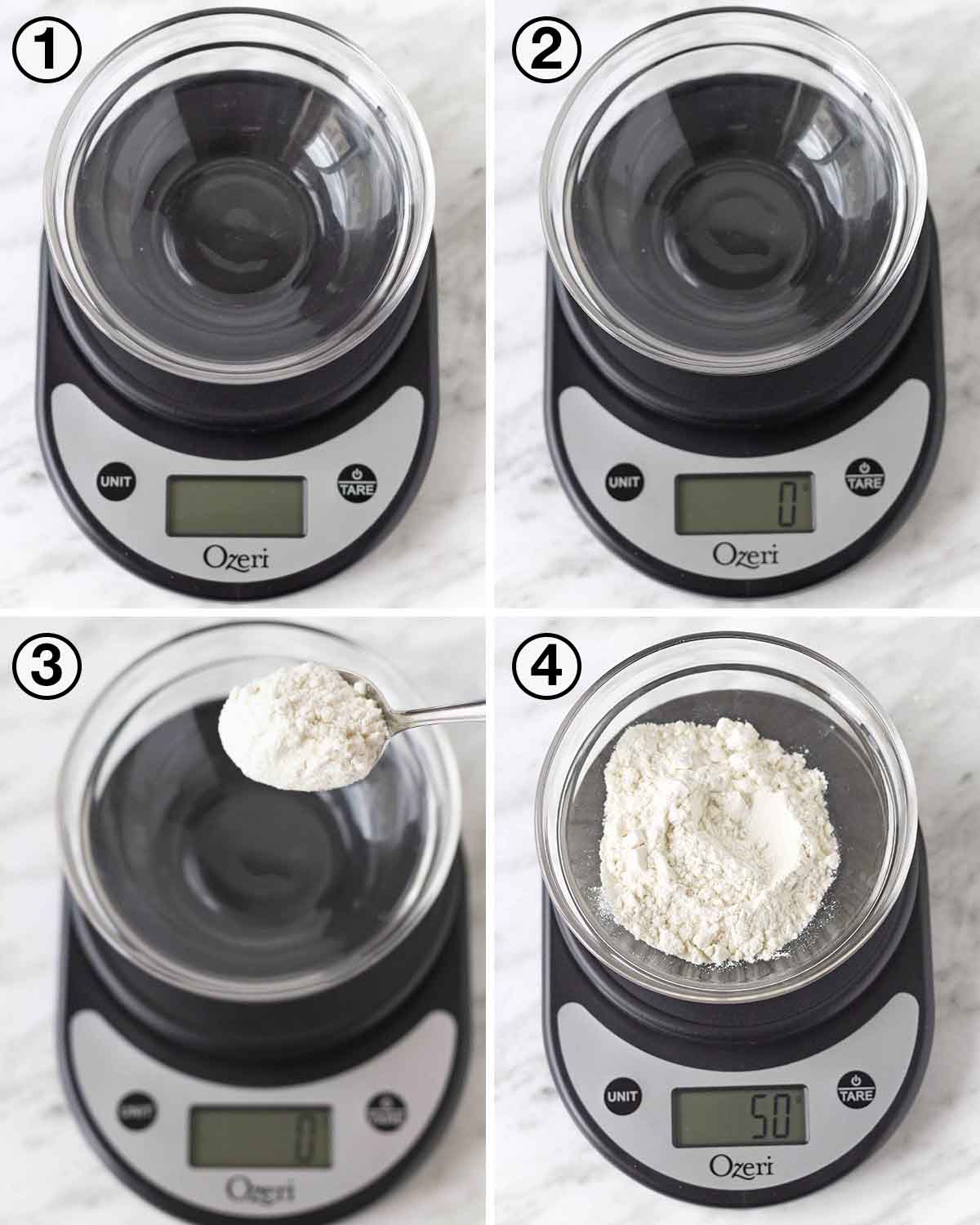
FAQ
Different flours have different weights and densities, so it depends on the type flour you're using.
Your best bet is to look up the cup equivalents on a website that does weight to volume calculations (or buy a scale 🙂 ).
Yes, you can. Measure the ingredients out using the cup measurements the recipe gives, weigh each of them, and write everything down so you have the weight measurements for next time.
Unless the recipe says to sift the flour before measuring or weighing it, don't sift it. Sifting before measuring or weighing can cause your flour to be 20 to 30% less than a cup of flour sifted after measuring [source].
Here is a helpful tip:
• If a recipe says 1 cup of flour, sifted, measure the flour first, THEN sift it.
• If a recipe says 1 cup of sifted flour, sift the flour, then measure or weigh it.
As mentioned in the first question, different flours and flour brands have different weights and densities, so if one website is using one brand, another may be using a different brand. That being said, there shouldn't be a drastic difference across websites (or even recipe books) when it comes to weights for the same ingredient, a difference of a few grams is nothing to worry about. ALWAYS use the weight the recipe author states in their recipe rather than what you think it should be, because that is the weight they used to develop the recipe.
Scales Can Be Used for More Than Flour
I use mine for a large variety of recipe ingredients, like sugar, vegan butter, vegetables, fruits, and more. Weighing your ingredients when baking (and cooking!) will improve accuracy, making your recipe results better.
It will also allow you to make recipes that list the ingredients in weight measurements only, you know, the recipes you usually pass on once you see the ingredient measurements! (I used to do that, I no longer have to!)
Finally...
Learning how to measure gluten free flour and how to weigh gluten free flour is essential to successful vegan gluten-free baking. (Learn all of my other tips for vegan gluten-free baking here!) And this doesn't just apply to vegan gluten-free baking, it applies to ALL baking.
Using a scale is the best and most accurate way, but if you can't purchase a scale or you just don't want to use one, that's okay, cups will work, too, you just need to use them in a way that will give you the most accurate amount for your recipes so what you're baking turns out every single time.
If you like this how-to, you may also like these others:
- How to Blind Bake a Pie Crust
- How to Make An Egg Replacement with Chickpea Water
- How to Make a Vegan Egg Wash
- How to Make a Flax Egg
- How to Make Vegan Buttermilk
- How to Make Your Own Oat Flour
- How to Tell if Your Baking Powder Is Still Fresh
How to Measure Flour Correctly
Suggested Equipment:
Ingredients:
- 1 cup Flour of any type
Instructions:
Measuring Flour with Measuring Cups
- Using a spoon or fork, gently fluff up the flour to aerate it slightly and unpack it.
- Gently spoon the flour into your measuring cup and be sure not to press/pack it down or tap on the sides of the cup. Don't use a scoop to do this step, only use a spoon.
- Overfill the cup and using the flat edge of your butter knife, scrape it across the top to get rid of the excess flour.
Measuring Flour with a Kitchen Scale
- With the scale off, place the bowl you'll be adding the flour to on top of the scale.
- Turn the scale on and make sure the display reads zero. If for some reason it doesn't, press the tare button. Make sure that the scale is set to measure in grams.
- Using the spoon, add the flour to the bowl until you get to the weight you're looking for.
Recipe Notes:
- Please read all info and FAQ above to ensure success and follow along with the images.
- The weight of the flour will depend on the type of flour you are using since all flour types have different weights.

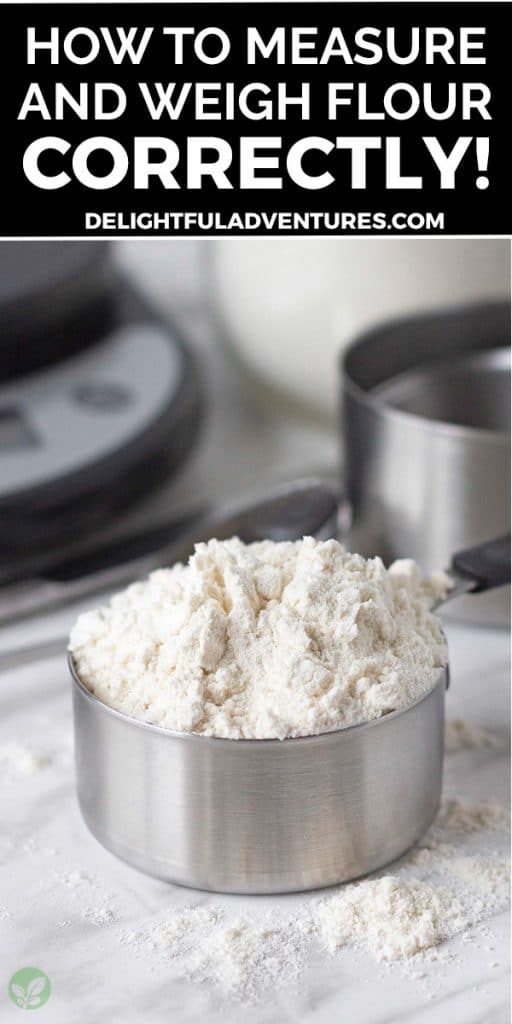
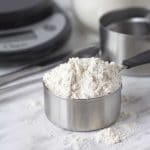
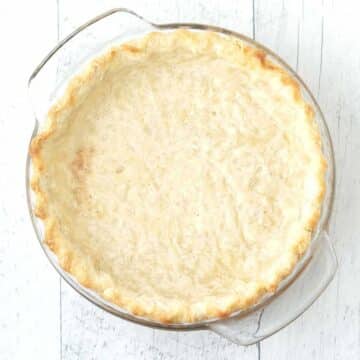
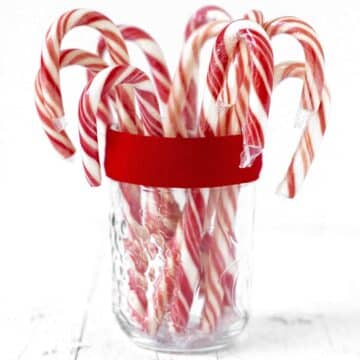
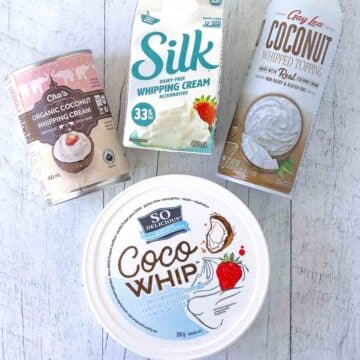
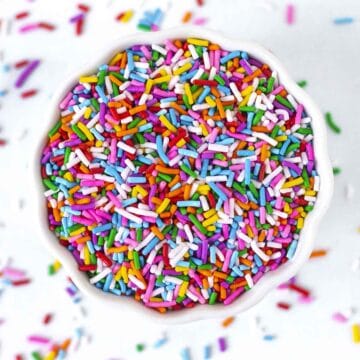
Julie says
I've been doing it all wrong! Haha. Thank you for this helpful article!
Gwen Leron says
You're welcome, Julie! I'm glad it was helpful 🙂